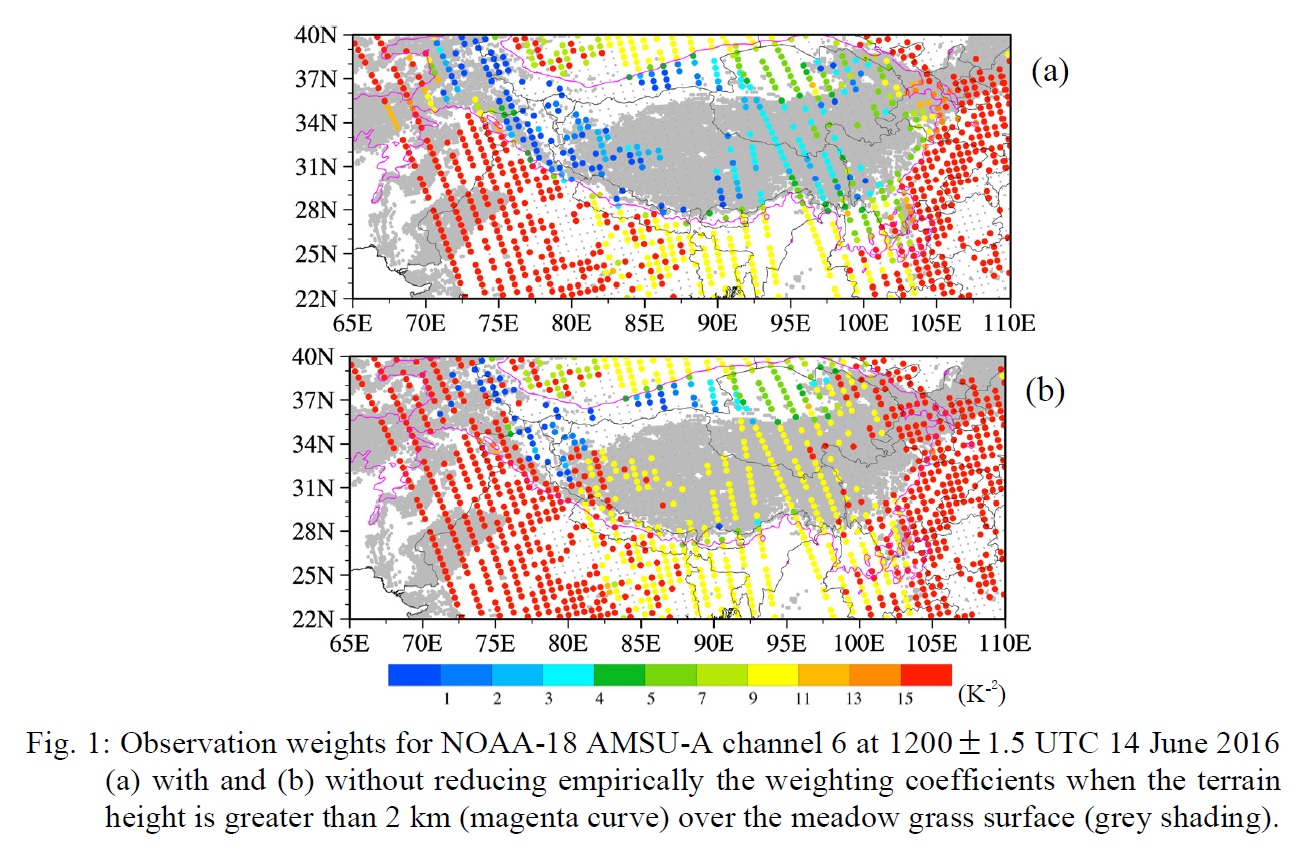Graphical Abstract
Qin, Z., and X. Zou, 2019: Impact of AMSU-A Data Assimilation over High Terrains on
QPFs downstream of the Tibetan Plateau. J. Meteor. Soc. Japan, 97, 1137-1154.
https://doi.org/10.2151/jmsj.2019-064
Graphical Abstract with highlights
Plain Language Summary: The weighting coefficients for assimilating mid-tropospheric AMSU-A channels 6 and 7 are empirically and significantly reduced over high terrains in the ARW/GSI system due to increased impacts of surface emissivity and skin temperature on these two channels in general. A study of the adjoint relative sensitivity reveals that brightness temperatures at AMSU-A channels 6 and 7 remain to be more sensitive to air temperature than to surface emissivity and surface skin temperature at the meadow grass surface type over the Tibetan Plateau (TP). Therefore, the weight coefficients for assimilation these two channels should not be reduced over the meadow grass areas of the TP. This allows the AMSU-A channels 6 and 7 to play bigger role in satellite data assimilation and produced larger positive impacts on 48-h forecasts of the mid-tropospheric trough, water vapor, and quantitative precipitation forecasts downstream of the TP.
Highlights:
- The adjoint relative sensitivity of AMSU-A channels-6 and -7 brightness temperatures to air temperature is greater (smaller) than that to surface emissivity over meadow grass (ice) surface over height terrains.
- Assimilation of AMSU-A channels 6 and 7 observations over the Tibetan Plateau without reducing their observation weights over the TP with the meadow grass surface bought positive impacts to quantitative precipitation forecasts downstream of the TP.







